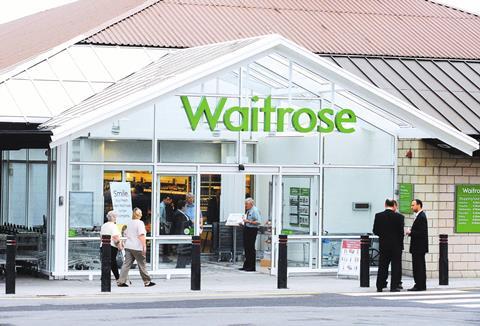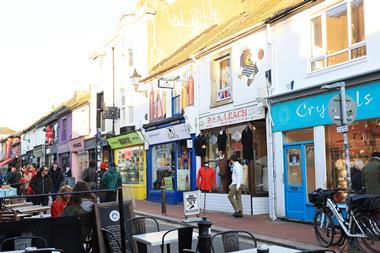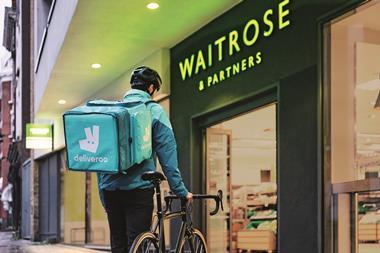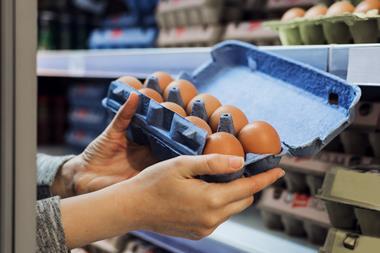
Waitrose has taken a bigger hit to passing footfall than any other major supermarket thanks to changed shopping habits during the pandemic, exclusive research suggests.
Data analysts CACI used mobile phone location data to track average weekly footfall in the area immediately surrounding stores throughout the pandemic, and compared the numbers to a pre-Covid base period.
It found pandemic footfall near Waitrose stores – excluding its Little Waitrose convenience format – was 85% of the pre-Covid level. Little Waitrose came out worse still, at 64% of the pre-pandemic level.
Together the Waitrose formats took last and second-to-last place in a CACI footfall table covering the 11 biggest grocers.
By contrast, pandemic footfall near Co-op stores was 110% of pre-Covid levels.
Tesco, excluding its Express stores, was second at 103%, followed by Lidl at 101%.
CACI senior consultant Charlotte King pointed to Waitrose’s affluent shoppers as an explanation, saying they had been more likely than other consumers to change shopping habits during the pandemic.
Separate research – CACI’s Acorn consumer classification – had identified Waitrose’s “key shopper types” as consisting of “affluent family groups”, and “younger affluent professionals” who were more likely to work from home and shop around – including online, said King.
“Throughout the pandemic, Acorn coded mobility data has shown affluent demographic segments have been able to restrict their levels of movement to a far greater extent due to working from home.
“These segments are far less price-conscious so were able to switch to alternative methods of getting their groceries to minimise social contact. For example, we saw the usage of local butchers, milk deliveries and online shopping in general rise amongst these groups.”
Despite the numbers, Waitrose saw sales soar under lockdowns, up 10.3% to £6.9bn in the year to 30 January 2021.
King said its affluent shoppers were also more likely than others to have increased basket spend as a means of reducing their risk of Covid infection.
“Due to the fact they are less price conscious, Waitrose shoppers are able to front-load expenditure by shopping for two weeks in one go compared to less affluent consumers more aligned to other retailers, who would struggle to afford this behaviour,” she said.
Just ahead of Waitrose came Sainsbury’s, excluding its Local format, with footfall nearby its stores at 90% of pre-pandemic levels.
Meanwhile, the 11% increase in footfall near Co-op stores stems from consumers re-engaging with their local community and spending time and money in their local high streets, as well as choosing retailers aligned to their values, according to King.
“The Co-operative’s community values will have appealed to consumers throughout Covid as we all re-evaluated what was important,” she said.
CACI consumer research had found shoppers were “actively choosing to shop with retailers that were treating staff well, had strong ethics and supported local businesses”, King added.
The data also suggests Aldi fared worse than rival Lidl, with nearby footfall at 91% of pre-pandemic levels.
| Retailer/format | Weekly average surrounding footfall from 15 March 2020 to 30 January 2022 as a percentage of pre-Covid level |
|---|---|
| Co-op | 110.4 |
| Tesco (excluding Express) | 103.4 |
| Lidl | 100.9 |
| M&S | 94.7 |
| Tesco Express | 94.6 |
| Morrisons | 94.6 |
| Iceland | 91.3 |
| Aldi | 91 |
| Sainsbury’s Local | 90.8 |
| Asda | 90.7 |
| Sainsbury’s (excluding Local) | 90.4 |
| Waitrose (excluding Little) | 85.4 |
| Little Waitrose | 64.3 |
| Source: CACI and Digital Envoy | |



















No comments yet